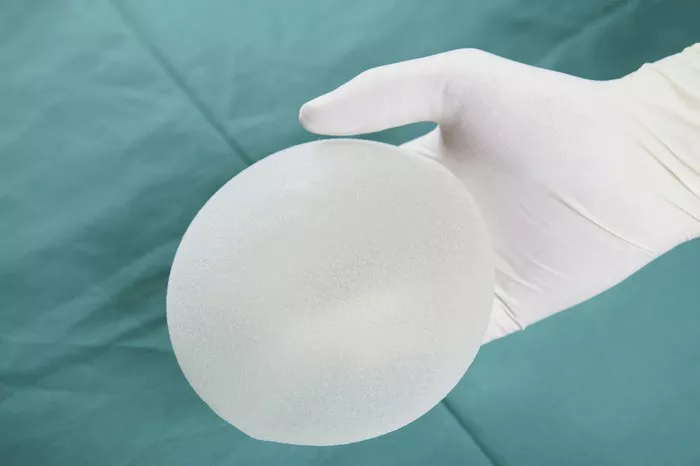Breast augmentation, a transformative journey for many, involves careful consideration and planning. While breast implants are designed to be durable, they are not intended to last a lifetime. As time passes, changes in the body and the implants themselves may necessitate replacement. Being attuned to the signs indicating the need for replacement is crucial for maintaining both the aesthetic and functional aspects of breast augmentation. In this article, we will explore six key signs—Moving Implant, Rippling, Rupturing, Hardening, Sizing Issues, and Changes in Breast Appearance—that may indicate it’s time to consider replacing breast implants.
1.Moving Implant
One of the signs that your breast implants may need replacement is a noticeable shift in the position of the implant. Over time, factors such as gravity, changes in weight, or alterations in breast tissue can contribute to the displacement of implants. This movement may lead to an asymmetrical appearance or discomfort. If you observe a significant change in the positioning of one or both implants, it is advisable to consult with your plastic surgeon. They can assess the situation and determine whether corrective measures, such as implant replacement, are necessary to restore symmetry and balance.
2.Rippling
Rippling is a phenomenon where visible wrinkles or ripples appear on the surface of the breast, creating an irregular texture. This can occur when the implant is palpable through the skin, giving the breast a less natural and smooth appearance. Rippling is more common in individuals with thin breast tissue or those who have chosen saline implants. If you notice the development of rippling and find it aesthetically displeasing, it could be a sign that your implants may need replacement. Your plastic surgeon can evaluate the degree of rippling and recommend appropriate solutions, which may include selecting a different implant type or adjusting the implant placement.
3.Rupturing
One of the more critical signs that your breast implants may require replacement is the occurrence of implant rupture. Implant rupture refers to a tear or hole in the implant shell, allowing the contents to leak. Rupturing can occur due to various factors, including trauma, age-related wear and tear, or manufacturing issues. While silicone implants are designed to retain their form even in the event of a rupture, it is crucial to address the issue promptly. If you experience symptoms such as changes in breast shape, swelling, or discomfort, seeking immediate medical attention is essential. Diagnostic imaging, such as an MRI, can confirm the presence of a rupture, and replacement surgery may be recommended.
4.Hardening
Capsular contracture is a condition where the natural scar tissue (capsule) that forms around the implant becomes excessively tight, leading to increased firmness and potential distortion of the breast shape. While some firmness is normal due to the encapsulation process, significant hardening can be a sign of capsular contracture. This condition can cause discomfort, changes in breast appearance, and, in severe cases, pain. If you notice increased firmness, asymmetry, or any signs of capsular contracture, it is advisable to consult with your plastic surgeon. Treatment options may include revision surgery to address the capsule and replace the implants.
5.Sizing Issues
Another sign that your breast implants may need replacement is when changes in your body and breast tissue lead to sizing issues. Factors such as weight fluctuations, pregnancy, or the natural aging process can impact breast volume and shape. As a result, the implants that once complemented your body may no longer provide the desired aesthetic outcome. If you experience changes in your breast appearance or overall body composition that affect the fit and balance of your implants, it may be time to consider replacement. Your plastic surgeon can assess these changes and recommend appropriate adjustments, potentially involving a change in implant size or type.
6.Changes in Breast Appearance
While changes in breast appearance encompass various factors mentioned earlier, it’s essential to recognize the broader category of aesthetic dissatisfaction as a key sign that your breast implants may need replacement. This dissatisfaction can manifest in different ways, including changes in breast shape, size, or symmetry, as well as a desire for a different look than what the current implants provide. Aesthetic preferences evolve over time, and what may have been appealing initially may no longer align with your desired outcome. Open communication with your plastic surgeon about your aesthetic goals and any concerns you may have is crucial for determining the best course of action, which may involve implant replacement to achieve your desired look.
Conclusion
In conclusion, ensuring the longevity and satisfaction of breast implants requires proactive care and attention to potential signs indicating the need for replacement. From changes in implant position and the development of rippling to more critical issues such as rupturing and capsular contracture, staying attuned to these signs allows individuals to address concerns promptly.
Regular follow-up appointments with your plastic surgeon, routine self-examinations, and diagnostic imaging when needed are essential components of maintaining breast health and addressing any potential issues with implants. Recognizing the individuality of each breast augmentation journey, including changes in body composition and aesthetic preferences, fosters a proactive and collaborative approach between individuals and their plastic surgeons.
By staying informed, seeking timely medical advice, and engaging in open communication with healthcare professionals, individuals with breast implants can navigate their aesthetic journey with confidence, ensuring that their breast augmentation continues to enhance their confidence and well-being over the long term.

